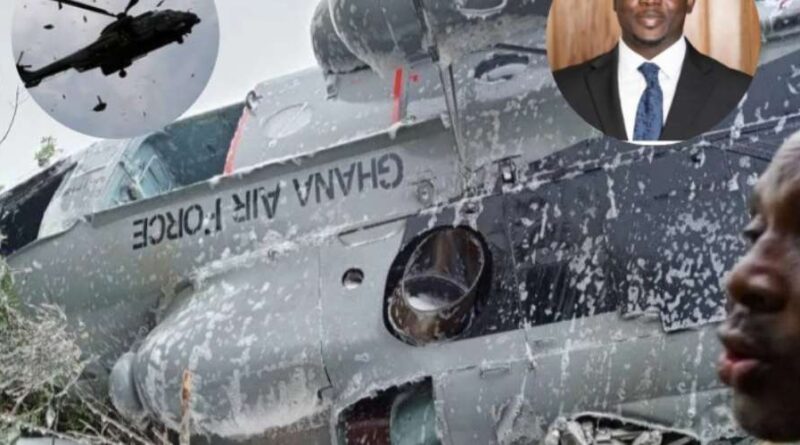A Forensic Look at the Z-9 Helicopter Crash
A US-based Ghanaian forensic scientist, Jonathan Awewomom, offers his perspective on the recent Z-9 helicopter crash. While he salutes the courage and communal spirit of the people of Adansi for rushing to help, he explains that their presence at the scene inadvertently complicated the forensic investigation. Awewomom states that the public’s actions—which unintentionally disturbed tiny clues like debris positions, ground marks, and even footprints—were not wrongdoing. Instead, he says, their actions came from a lack of public awareness about crash scene preservation. Meanwhile, the nation continues to mourn the fallen and extend condolences to their families.
Awewomom went on to explain exactly what changed at the site. He discussed the importance of Debris Field Geometry (DFG), which refers to the shape, size, distribution, and orientation of fragments. Experts use this information to determine if the helicopter broke apart in flight or upon impact and where structural failures began. Unfortunately, early public access compromised this crucial information. Moreover, foot traffic overprinted surface marks and burn patterns, including gouges and tree-strike signatures. Forensic experts use these marks to map the aircraft’s final seconds and its attitude upon impact. The handling of fragments without gloves also contaminated the site, potentially affecting DNA and other trace evidence. Finally, small electronic media, such as memory cards and personal devices, were displaced or lost.
Nevertheless, the expert reassured everyone that investigators can still find the truth. Although the public disturbed some physical evidence, forensic teams can use other advanced methods to collect information. For example, they can use digital forensics to reconstruct timelines from the aircraft’s “black box” and other personal devices. Investigators can also perform wider-area 3D mapping and materials analysis to provide new, corroborated evidence. Furthermore, Awewomom suggests that investigators can consider environmental data and even wildlife-strike forensics to provide a complete picture of the crash. Together, these evidence streams can replace the information that was lost on the ground.
Awewomom also provided a key recommendation for future incidents: better disaster scene management. To protect lives and evidence, he argues that authorities must secure the perimeter early and restrict access to trained responders. He specifically recommends that the National Disaster Management Organization (NADMO) create “Community Scene Marshals”. These vetted volunteers can establish inner and outer cordons, steer crowds and traffic, and log early witnesses. This initiative, therefore, can channel the nation’s goodwill into safeguarding both safety and truth. While the
Z-9 helicopter crash remains a tragic event, the investigation can still reach sound conclusions by relying on a broader range of evidence and improving scene discipline.
Source: Jonathan Awewomom for Modern Ghana, August 28, 2025




